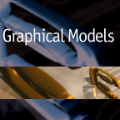Sparse graph recovery methods works well where the data follows their assumptions but often they are not designed for doing downstream probabilistic queries. This limits their adoption to only identifying connections among the input variables. On the other hand, the Probabilistic Graphical Models (PGMs) assumes an underlying base graph between variables and learns a distribution over them. PGM design choices are carefully made such that the inference & sampling algorithms are efficient. This brings in certain restrictions and often simplifying assumptions. In this work, we propose Neural Graph Revealers (NGRs), that are an attempt to efficiently merge the sparse graph recovery methods with PGMs into a single flow. The problem setting consists of an input data X with D features and M samples and the task is to recover a sparse graph showing connection between the features. NGRs view the neural networks as a `white box' or more specifically as a multitask learning framework. We introduce `Graph-constrained path norm' that NGRs leverage to learn a graphical model that captures complex non-linear functional dependencies between the features in the form of an undirected sparse graph. Furthermore, NGRs can handle multimodal inputs like images, text, categorical data, embeddings etc. which is not straightforward to incorporate in the existing methods. We show experimental results of doing sparse graph recovery and probabilistic inference on data from Gaussian graphical models and a multimodal infant mortality dataset by CDC.
翻译:在数据符合其假设但通常不是为了进行下游概率查询而设计为下游图样图恢复方法的地方,简单图表恢复方法在数据遵循其假设的情况下效果良好,但通常不是设计用于进行下游概率查询的。这限制了其采用仅仅识别输入变量之间的连接。另一方面,概率图形模型(PGM)在变量之间假定一个基础图,并在变量上学习分布。PGM设计选择谨慎地将神经网络视为“白箱”或更具体地说是一个多任务学习框架。在这项工作中,我们提出“有一定限制的路径规范”,NGRs利用该路径规范来学习一个图形模型,该模型将稀散图恢复方法与 PGM 有效地合并成一个单一的流程。问题设置包括带有D特性和M样本的输入数据数据数据数据X,而任务则是恢复显示显示显示各功能之间连接的细小图。NGRS网络将神经网络视为“白箱”或更具体的多任务学习框架。我们引入了“有深度限制路径路径”路径规范,NGRs 来学习一个图形模型,该模型将复杂的非线性功能性功能依赖数据依赖,在不直接的图像图像图像中,在不直接化的图像中,可以显示中,在不直接的图像中,在演示式的图像中,可以使用。</s>



